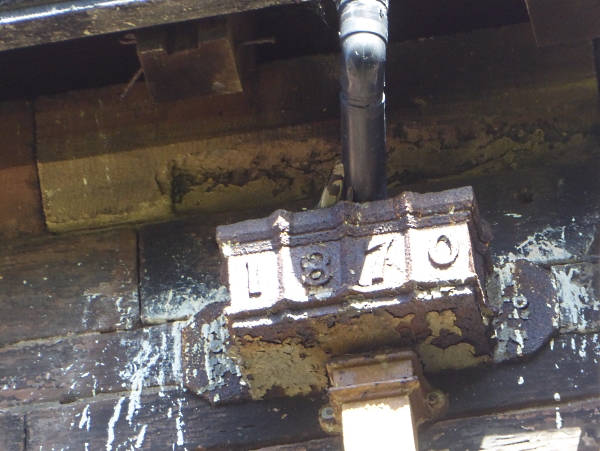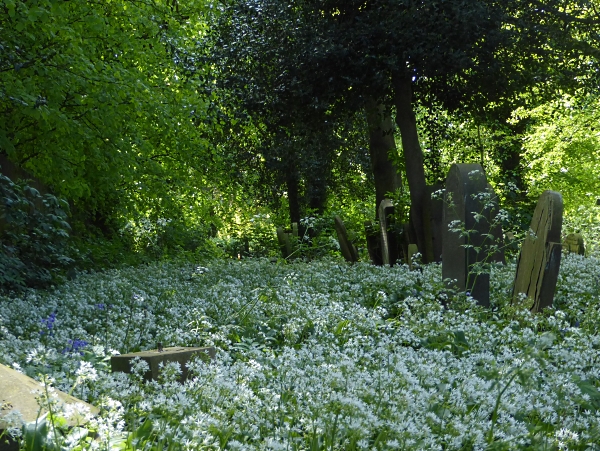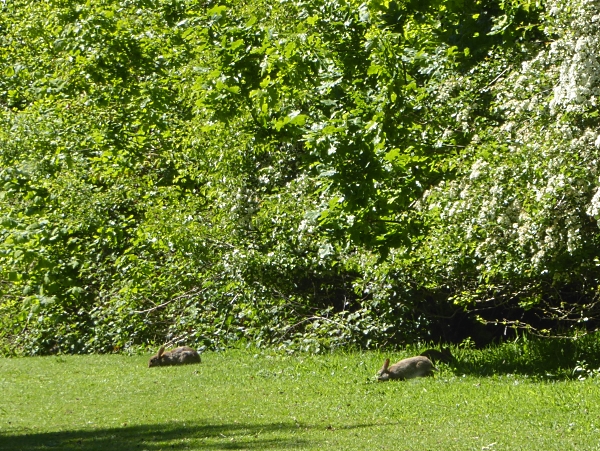Kirkby was originally a quiet old village near Liverpool, but a new housing estate was built there in the 1960s. The name is Scandinavian, from the Old Norse word elements ‘kirkja’ and ‘byr’, meaning ‘church’ and ‘village’. Kirkby is another Merseyside place with a proud Viking heritage, exemplified by the design of a longship in the gate of their newest park.

Opposite the church of St Chad, the Millennium Green had a profusion of Red Campion, the only flowers remaining from the civic wildflower planting of a few years ago. Some flowers were a darker red, and others were white.

The edges of the green were clothed in Cow Parsley, and several butterflies were out in the sun – Small White, Orange Tip and our first Small Copper of the year, sipping on a Daisy.

The church of St Chad has an ancient foundation, preceding the Norman conquest, and the church in Kirkby is recorded in the Domesday Book. The font is early Norman and is considered to be the oldest man-made object in Kirkby. The present church was built in about 1870 by the Molyneux family, the Earls of Sefton, and many of them are buried in the graveyard at the west end. Oddly, the Molyneux gravestones have been neatly boxed in new chipboard, perhaps as protection preceding restoration. The effect is rather spooky, though.

Our main goal at St Chad’s was to see if the Peregrine Falcons were nesting in the belfry again. They were indeed, and we spotted one adult on the louvers, listening intently to something calling within. Before I could take a picture, the 11.45 bells rang out loudly and suddenly, the Peregrines shrieked in outrage, and three of them flew off. Two parents and one chick? Soon afterwards we spotted a young one on a buttress roof, but the adults didn’t return while we were waiting.

Not long before the 11.45 bongs we had also been looking at the hopper at the top of a drainpipe, where we had seen a Kestrel nesting a few years ago. Something was sitting in it, well down, but all we could see was a grey and black tail. Could it have been a Sparrowhawk? It must also have flown off when the bells rang, and we didn’t see it again

There were Wood Pigeons and Jackdaws flying about, and a Robin in the shrubbery. In the brook below the church someone had abandoned a supermarket trolley, which was lying on its side. A Nuthatch took advantage of the low perch and came down for a drink. A Holly Blue butterfly flew busily past and the shady old area of gravestones at the southern end was a mass of Wild Garlic.

Just south of the church is a little park called St Chad’s Gardens, where we had our lunch. The specimen trees there have been planted with care and taste. A pair of Turkish Hazels flank the entrance, and there are several Red Horse Chestnuts Aesculus x carnea, which is an artificial hybrid between Red Buckeye and ordinary white Horse Chestnut.

There is also a young Dawn Redwood, a medium-sized Deodar Cedar standing alone and beautiful on a lawn, and several yellow Sycamores, the variety ‘Brilliantissimum’, which look pink in close-up.


The only problem is the failed Laburnum arch. A few years ago they put in the metal arch, planted the young Laburnum trees and then failed to train them over the sides and top of the arch. The trees have simply grown up alongside, reaching in the wrong direction, towards the light. A casualty of the cuts to council services, I suppose. What a pity.

Most of the ordinary Ash trees (Fraxinus excelsior) appear to be very late into leaf this year, with the first leaves just unfolding. Weeping Ashes are even later, with two near me in Crosby just showing the first buds breaking. However, the Manna Ashes (Fraxinus ornus) have been in full leaf and flower for a week or two. Could the slow ones be infected with Ash Dieback disease? The disease takes several years to weaken the trees, apparently. Are we going to lose all our Ashes? Denmark has lost 95% of theirs. According to the government’s Forest Research website, ordinary and weeping Ashes are susceptible, as is Narrow-leaved Ash (Fraxinus angustifolia) but Manna Ash might prove to be tolerant.
We ended the day in Millennium park, next to the church. There were rabbit droppings on all the bare patches of flattened molehills. We explored a wide grassy ride near the north end, which was lovely, as well as being quiet and deserted. Was everyone indoors watching the big football match? There were lots of butterflies about, including Small Whites, a fast-moving Brimstone, several Orange Tips and this well-worn ragged Peacock.

It was so quiet that a few Rabbits started emerging from the shrubberies, out onto the grass.

In the small reedy wetland area along the Simonswood Brook we thought we heard a Sedge Warbler. John also spotted a Goldfinch and a Tree Sparrow. There were plenty of tadpoles in the pond.

Public transport details: Bus 20 from Queen Square at 10.10, arriving Kirkby Row / Old Hall Lane 10.55. Returned from Kirby Row / James Holt Avenue on the 21 bus at 2.20, arriving Liverpool 3.10.
